What Color Pants Go With Pink Shirt
Let's say you're working on a painting and need to mix the perfect shade of pink. Where would you even begin? What colors make pink? In order to understand how to make pink, we need to understand a whole lot about both physics and culture. This article will teach you everything you need to know about what colors make pink...and we'll teach you a little about color theory, too! Here's what you'll find below: There's a lot to cover, so let's get started! Let's start with the very basics. What colors make pink? Red and white mixed together make pink. The amount of each color you add affects the shade of pink you end up with. So more white will give you a lighter pink, whereas more red will give you a darker pink. That means that pink is actually a tint, not a pure color. Tints are made when you mix any color with white. So because pink is a mix of red and white, it's actually a tint! Seems pretty simple, right? Not so fast. Getting the exact shade of pink you want--like a deep mauve or a bright fuchsia--is more complicated. You actually need to know more about the science of color in order to understand how to make these pink shades! Don't worry: we'll give you a quick overview of what you need to know below. Figuring out how to mix the perfect shade of pink--like the ones you'd need to paint a picture of this sunset--can be tough. But understanding the science behind the color can help simplify the process! Now you know what colors make pink, but what actually is pink? Mixing red and white together to make pink is a quick explanation to what's actually a pretty complicated process. So to answer the question, "What is pink," you kind of have to know what color is. And that involves understanding a little more about how light works. Here's how the master of color, Crayola, explains how light creates what we see as color: When light shines on an object some colors bounce off the object and others are absorbed by it. Our eyes only see the colors that are bounced off or reflected. The sun's rays contain all the colors of the rainbow mixed together. This mixture is known as white light. When white light strikes a white crayon or marker barrel, it appears white to us because it absorbs no color and reflects all color equally. A black crayon or marker cap absorbs all colors equally and reflects none, so it looks black to us. While artists consider black a color, scientists do not because black is the absence of all color. Basically, an object's physical makeup causes light (also known as electromagnetic waves) to bounce off of it in a different way...which creates color! So sometimes all color bounces off and it appears white. Sometimes none does and it appears black. But usually, an object has some other color like red, blue, or green...which is actually the wavelength of light that's being reflected by the object! But what is a wavelength? Think about light as if it were water at the beach. Sometimes the waves come in high and close together. At other times, the waves come in low and far apart. If you were to measure the length of those waves, you'd start at the crest (highest point) of one wave and measure to the crest of the next. That would give you the wavelength of the water on the beach. Light works very similarly, except the waves are much smaller and closer together. Your eyes measure these lengths as they bounce off an object and translate them in your brain to various colors. The whole range of possible wavelengths is called the "spectrum." Here's how the spectrum of light translates into the spectrum of color: (MNDNF/Wikipedia) The wavelength of light is measured in nanometers (nm). The longer the wavelength, the "warmer" the color appears. (We'll talk about "warm" and "cool" colors later.) But notice that we can only see a tiny portion of the entire spectrum of light--only those wavelengths between about 400 and 800 nanometers. But the possible wavelengths of light extend almost infinitely in either direction outside that tiny range. Some animals, like butterflies and reindeer, can actually see more of the available spectrum. The range that humans can see unaided by technology is called the "visible spectrum." Red, a primary component of pink, falls at just around 700 nanometers in wavelength, and is one of the longer wavelengths than we can see. The distance from crest to crest is just a little thicker than a soap bubble membrane. But more importantly, something that we perceive is red has a makeup up that causes it to absorb all wavelengths of light except those that fall around 700 nanometers in length. Because the object reflects that exact wavelength, we think it's red! But pink is not a naturally occurring wavelength of light. It is red, which is naturally occurring, plus white. So what two colors make pink? When any wavelengths that equal 700 nm--which is red--is mixed with white (which is the entirety of the visible spectrum). We know that sounds complicated, so we're gonna break that down a little more in the next section. When you mix together objects that reflect light differently, their ability to reflect light gets mixed together as well. This happens in two different ways: additive mixing and subtractive mixing. Additive mixing is how the colors mix when the waves of light themselves are combined together. So for example, if a wavelength of 250 nm and another, different wavelength of 450 nm mix together, you would get the color red...even though neither of the original two wavelengths are on the red part of the light spectrum. This is actually how your television works. So what two colors make pink when you combine wavelengths? In additive mixing, pink is a mix of red and blue wavelengths of light. Subtractive mixing happens when wavelengths are removed from the visible light spectrum through the use of physical mediums, such as paints or dyes. This process is called subtractive color because the colored pigments create layers that absorb some wavelengths and reflect others. When you mix red and white paint or dye to make pink, you're actually mixing compounds that reflect different wavelengths. In the case of pink, some of the compounds in the mixture reflect the red wavelength of light, while others reflect all wavelengths (since that's what white is). When combined together through subtractive mixing, these white and red compounds reflect light that we perceive as pink! Remember how we said earlier that pink isn't exactly a color...it's a tint? Tints are colors made by adding white to another color. Shades are made by adding black to another color. The amount of black or white added relative to the amount of color is called the saturation. This addition of black and white into the mix turns the color wheel into a color sphere: So the color pink only exists as a tint of red. Meaning something red must be mixed with something white, and perhaps a hint of another color, to make pink. Most of us refer to a color as "neon" if it appears to be an intense, bright shade of a particular color. Neon oranges, yellows, and pinks are popular colors to use in high visibility situations...or if you're just trying to capture an 80s vibe. It turns out that what actually makes a color neon is its transparency. When light is able to pass through the pigment and reflect off the surface underneath it, it creates a "neon" effect. So if you want to make a neon pink, you'll need to use special pigments and base mediums that allow light to pass through! (Nick Youngblood/Alpha Stock Images) Pink is actually a pretty complex color. That's why there are plenty of myths that make understanding how to make pink a complicated process. We're going to debunk two of the most common myths about the color pink below. Thanks to this YouTube video from Minute Physics, the idea that "pink doesn't exist" became pretty prevalent. And there's some truth to this idea. If you believe that color only exists if it's one wavelength on the visible light spectrum, then yeah. There's no such thing as pink light. And historically speaking, the color pink is a relatively recent phenomenon. The color pink is named after a type of flower native to western Europe--Dianthus plumarius, the Pink. Pink as a color of dye was not popular until the 18th century. Previous to that, people tended to wear shades of red or purple instead. But as we pointed out above, you absolutely can make pink through additive and subtractive color mixing. As Michael Moyer points out in Scientific American , "Pink is real—or it is not—but it is just as real or not-real as red, orange, yellow, green, blue, indigo and violet." If you think back to elementary school, you probably remember at least one of your classmates complaining about how pink is a "girl's color." First things first: there is no scientific evidence that liking or perceiving pink is tied to being biologically female. Women aren't able to see more shades of pink than men, nor are their eyes more optically sensitive to the color. The association of pink with people who identify as women, then, is a social construct. Society has taught us that girls should like pink and boys should like blue. Would you like to guess when the "pink is for girls" idea originated? In the 18th century? Nope. In 19th century? No. Pink wasn't associated with femininity until the mid-1900s. In 1953, Mamie Eisenhower wore a pink gown to her husband's presidential inauguration, which began the association of pink as something ladylike and feminine. Prior to this, pink was seen as an appropriate color for both male and female children. Now that you know all about the science behind pink, you've probably guessed that various tints and shades of pink can be made by adding red and white with another color, usually black, white, blue, or purple. The individual amounts of red, white, and other colors together create a specific shade of pink. Here are some of the most popular shades of pink! What two colors make pink? In essence, white and red. Tints that are more on the reddish end of the spectrum would be: Wine Would you like to know how to make pink that is a lighter shade? Paler pinks, which contain more white than red, are often referred to as soft pinks. Here are some of the most popular: What color does pink and blue make? Typically pinks with the addition of blue and purple hues are in the violet family. Here are some popular examples: Pinks that have added black or grayish tints are popular in home decorating because they made for an understated pink that complements many other colors. Here are a few pinks that are more grayish: Here are a few other tints of pink you should know about. What color does pink and green make? Cream! Depending on the color mix and saturation, you can have a light cream (like milk) or a dark cream bordering on brown. What color does pink and orange make? Peach! Since orange also contains yellow, you can adjust the shade of orange to get a brighter, more vibrant shade of peach, too. What color does pink and black make? Eggplant! Adding more black will make for a deeper eggplant color. Magenta is a super important shade of pink because it's one of the four colors that allows for color printing! In order to make magenta, just mix a bright shade of red with a little blue! Now that we've discussed the color pink in some depth, you're probably ready to try creating your own shade of pink. You already know which two colors make pink--white and red--so start there. Then you can check out our three top tips to help you create the exact tint of pink you want. We highly recommend using the color matching company Pantone's online color tool as a way of helping you visualize various hues of pink. In color, "hue" refers strictly to the colored pigment or combinations of pigments without white or black added. (Remember: white and black affect the saturation of your color!) Hue is the element that creates the pure color. So if you want a warm shade of pink, start with a warm red hue. This will have undertones of yellow or orange. For a cool pink, start with a cool red hue. These shades will have a blue, green, or purple undertone. The relative lightness or darkness of a color is called its "value." Typically colors with a lighter value (more white added) feel lighter and easier, like baby pink. If you're trying to match a light pink color in a drawing or painting, try adjusting the value to include more white. Darker values (more black added) feel more intimidating and threatening. Wine and eggplant are two pink shades that tend to be a little more moody, for example. If you're aiming for a darker, more vibrant shade of pink, try adjusting the values to include more black. The amount of color included in a hue relative to the amount of white or black is called its "saturation." Colors that have very little white or black added are more intense. So if you're aiming for a bright fuchsia or magenta, turn that saturation dial up. Colors that have a lot of white or black added are less saturated. So a color like bubblegum pink will have a lower saturation. If you're interested in color, you might be a good fit for art school. We have a list of top art schools that can help you find a program that's right for you. Did you know that you can go to art school abroad, too? Here are the top 12 art schools across the globe. Finally, if you want to learn more about how colors work, you'll need to take physics, since it's the branch of science that studies waves and light. Luckily, there are three AP Physics classes you can take: Physics 1, 2, and C. You can learn more about the differences between them in this article. 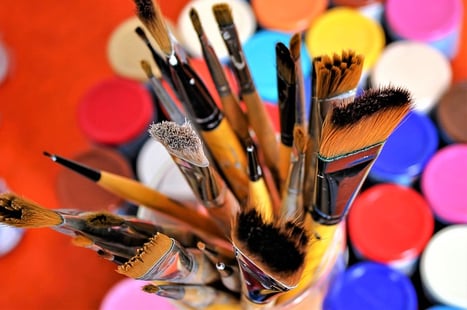
How to Make Pink: A Quick Primer 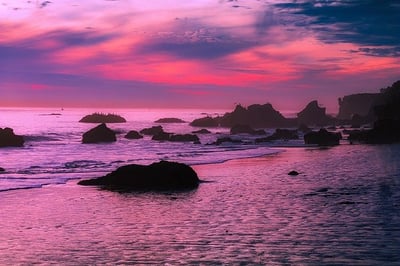
What Is Pink? The Science Behind the Color
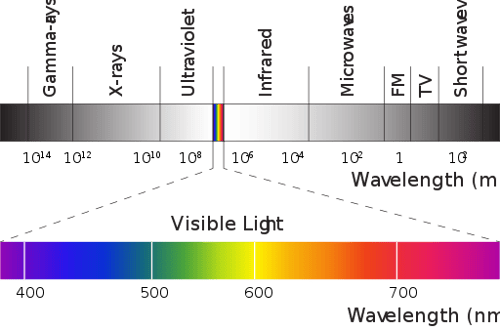

So How Do You Make Pink?
How to Make Pink: Additive Mixing
How to Make Pink: Subtractive Mixing
How to Make Pink: Tints and Shades
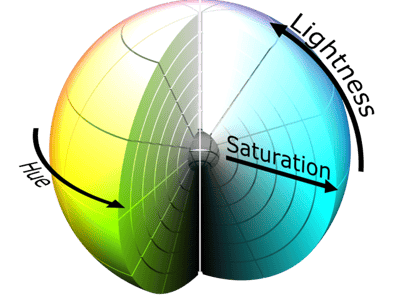 (Datumiz/Wikimedia)
(Datumiz/Wikimedia) How to Make Pink: Neon Shades
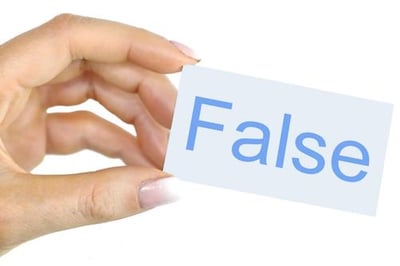
Myths About Pink
Myth 1: Pink Doesn't Exist
Myth 2: Pink Is a Girl's Color
What Other Colors Can You Make With Pink?
Predominantly Red Tints of Pink
Strawberry

Punch


Mulberry

Predominantly White Tints of Pink
Rose

Powder Puff

Bubble Gum

Blue and Purple Tints of Pink
Violet

Lavender

Mauve

Gray Tints of Pink
Iris

Heather

Other Colors in Tints of Pink
Cream

Peach

Eggplant

Magenta
3 Tips for Getting the Hue of Pink You Want
Tip 1: Choose a Hue
Tip 2 Consider Darkness and Light
Tip 3: Adjust the Saturation
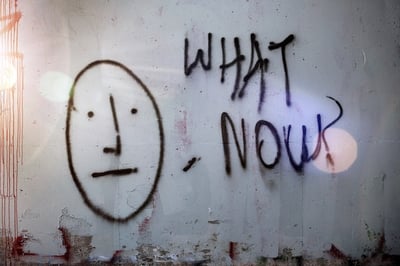
Now What?

About the Author
Ashley Sufflé Robinson has a Ph.D. in 19th Century English Literature. As a content writer for PrepScholar, Ashley is passionate about giving college-bound students the in-depth information they need to get into the school of their dreams.
What Color Pants Go With Pink Shirt
Source: https://blog.prepscholar.com/what-colors-make-pink